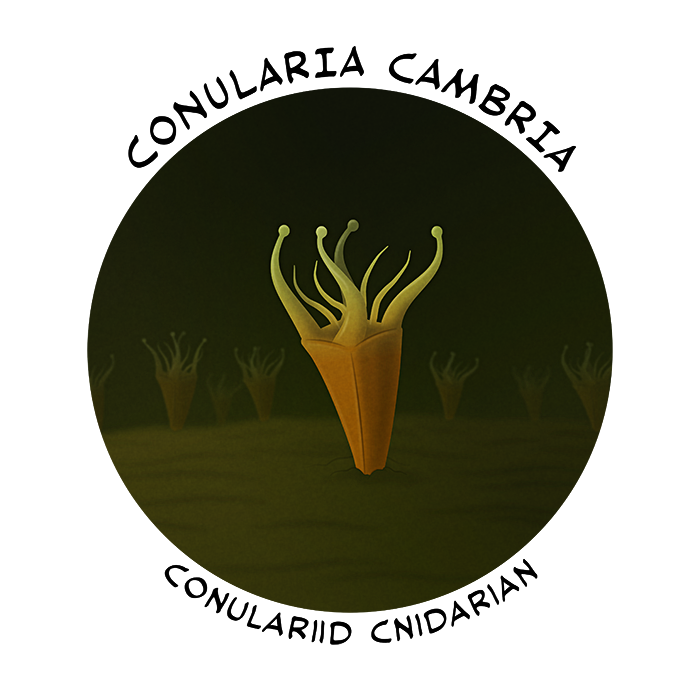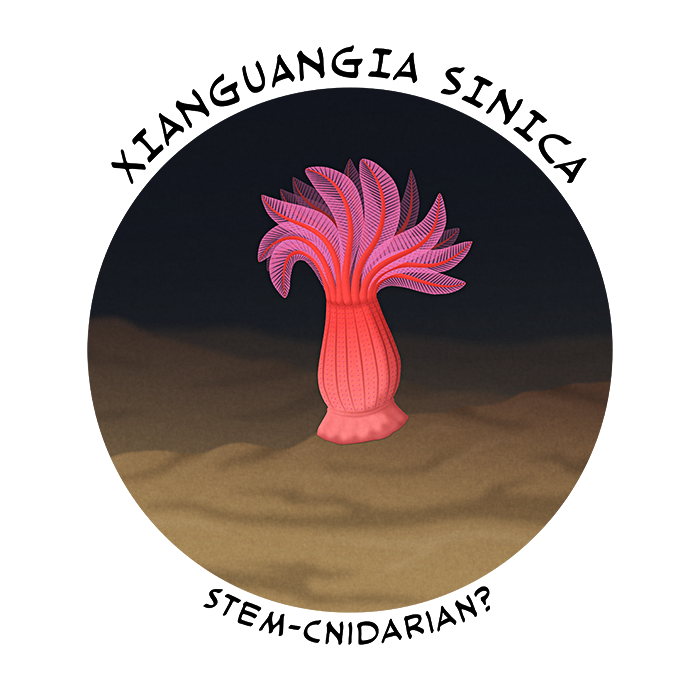Odd shell-like structures that resemble angular ribbed cones with four-way symmetry appear in the fossil record starting around the mid-to-late Cambrian (with a possible Ediacaran record).
Known as conulariids, these fossils are so distinctive and different from anything else that for a long time their evolutionary affinities were unknown, and they were considered to be a “problematic” group. But in recent years they’ve been identified as being cnidarians, generally thought to be close relatives of modern stalked jellyfish.

Conularia cambria was one of the earliest definite conulariids, known from the states of Wisconsin and Minnesota, USA, and dating to the Late Cambrian (~490 million years ago). Up to about 5cm long (2″), its shell lacked the ribbed texture of most other conulariids but it would have otherwise looked very similar to later species – living attached to the sea floor by the pointed end of the cone, with tentacles protruding from the wider end at the top.
Conulariids were also unique among cnidarians for producing pearls inside their shells similar to those found in molluscs.
And despite being relatively rare and low-diversity, conulariids were a surprisingly long-lived group. Not only did they last throughout the rest of the Paleozoic Era, but they then survived the Great Dying mass extinction at the end of the Permian and only went completely extinct at the end of the Triassic, about 201 million years ago.

Another unusual fossil from the mid-Cambrian Chengjiang biota in southwest China (~518 million years ago) might have been a cnidarian. Xianguangia sinica was a tiny 2cm tall (0.8″) sea anemone-like animal with a cylindrical body, an attachment disc at the bottom, and an upper whorl of around 16 tentacles with feather-like extensions that suggest it was a filter-feeder.
It’s generally considered to be a “stem-cnidarian”, part of an extinct early lineage that has no close modern relatives. It might represent a weird offshoot that experimented with a different body plan and feeding strategy than the rest of the group, or it might be a late-surviving example of what ancestral cnidarians originally looked like.
But other studies have instead linked it with potential ancestors of comb jellies, so its classification is still rather uncertain.
